Polestar, e-tron, Ioniq 5, EV6 top TC Auto Show
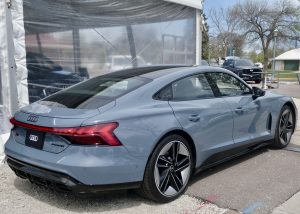
Audi’s e-tron GT led a variety of EVs available to test at the Twin Cities Auto Show, at the Minnesota State Fairgrounds through May 22.
By John Gilbert
If you own a car of any type, or a truck or SUV, you might be wondering what all the conjecture is about the cultural and sociological shift to electric vehicles (EV). It might be a few years until you make up your mind about EVs — or you could head to the Minnesota State Fairgrounds through Sunday to catch the final days of the 49th Twin Cities Auto Show, which is being held in the great outdoors.
Once there, you can find your way to the Electric (Vehicle) Neighborhood, where various manufacturers will have their latest prize EVs gathered amid the various displays of all manner of new cars and trucks. But if you’re curious about electric cars, that is the place to get a close-up look, and a brief test drive, in an EV of your choosing. Or several of them.
At the show’s media preview, we got the close-up look, and a special opportunity to take a few spins in some specific EVs of my choosing.
The first was one of the two most spectacular vehicles on the face of the earth — a Polestar 2. The second one was the Audi e-tron, my nomination for the most spectacular vehicle available. Both are sleek, ultra futuristic and luxurious, and both are pure electric vehicles (EV), which are the primary attraction at the 49th annual Twin Cities Auto Show.
They accelerated briskly, showing off their capabilities to go 0-60 in about 4 seconds, accompanied by the sound of …absolutely nothing. Of course, we were adhering to the strict limit of 20 mph on the nearly deserted fairgrounds streets. The Polestar 2 and the Audi e-tron clearly live up to all the publicity and promotion, and are reason enough to attend the show. They both are, however, over $100,000, so it might be wise to check them out with that in mind.
But many EVs are priced within the range of normal folks, and those vehicles, from Ford, Chevrolet, Hyundai, Kia, Volkswagen, on up to Jaguar are there for perusal. Some start below $40,000, which, with the possibility of government aid, and the certainty of rising gasoline prices, make them more of a potential alternative sooner rather than later.
The thought occurred to me, as we made the drive from Duluth to attend the media preview last Friday for the Twin Cities Auto Show, that the show might be the only function that truly benefitted by the COVID-19 pandemic. A year ago, nobody was anxious to go out and mix it up with a crowd of people that could spread that horrible disease, which still threatens us with assorted variants. The only way to keep the show going last year was to move it outside.
Out of desperation, the new vehicles were put on display last year at the Minnesota State Fairgrounds, on Snelling Avenue in St. Paul, and it worked so well the show’s organizers and dealerships decided to do it again this year, on purpose. The 49th annual runs through this weekend, ending Sunday, May 22nd.
There always have been good reasons to go to the show to evaluate future family vehicles where they can be compared to various others all in one location, but this year the show had gotten lucky with timing, because every car buyer is curious about the newest models, and particularly all the electric vehicles.
For example, we drove to the show in a new Chevrolet Equinox, an RS model, which is new for 2022, with trim and features. My older son Jack accompanied me, since he shoots photos and serves as my assistant for Newcarpicks.com. As I turned into the main entrance to the fairgrounds, and tried various streets searching for the media meeting place, called Electric Vehicle Neighborhood, I realized that as modern and up-to-date as the Equinox is, it, and all other conventional vehicles, seems old-fashioned next to the futuristic EVs being shown at the show.
The Twin Cities Auto Show has been an annual attraction in the Minneapolis Convention Center, and before that at the Minneapolis Auditorium, although weather can still resemble winter in the first week in March. We Minnesotans concede it can’t compares to the global caliber of the Detroit, Chicago, Los Angeles or New York auto shows, and those “big four” in the U.S. are small compared to the Frankfurt, Germany, show, or Geneva, or Paris, or Tokyo.
The Twin Cities show relies on local and regional dealers to bring their latest vehicles for display to help consumers compare various vehicles in one location. For that reason it was always worth attending.
The media types gathered at the preview didn’t seem too eager to check out the EVs the way we were, and after a catered batch of sandwiches and caramel rolls, they took their soundbites and departed, while Jack and I headed back to the accumulated EVs, with room to drive, rather than ride, around the proscribed course with professional driving instructor.
Gary Eick sat in the passenger seat and offered expert guidance and explanation. The great thing about these instructors is they also teach auto racing enthusiasts how to drive race cars at Brainerd International Raceway. I was just starting my career as a journalist and car enthusiast at the Minneapolis Tribune when BIR was built as Donnybrooke Speedway, and the drivers remembered me from those days. They also knew I had been road-testing and writing about new vehicles in an unbroken streak that now has reached 50 years. And counting.
Gary Eick was our personal guide, sitting in the passenger seat and offering valuable instruction about the varied driving controls, and warning us about how easy it is to go faster than you realize when there’s no sound emitted from your stepping on the gas.
The Polestar is built by Volvo under that name, as its new EV arm, and while various Volvos are now electric powered — including the official “Car of the Show” Volvo XC-90 Recharge — the Polestar 2 is already the latest version all-electric concept of Volvo’s Polestar 1, which has two electric motors at the rear, and Volvo’s 2.0-liter 4-cylinder supercharged and turbocharged gas engine to combine for 619 horsepower. But it costs $155,000, which means the company had to scale it back into the real world, and forward, at the same time.
The Polestar 2 has a comparatively reasonable sticker of around $50,000, with no gas engine, and your choice of single motor or dual motor. The single develops 231 horsepower and 243 foot-pounds of torque through front-wheel drive, and the two-motor puts out 408 horsepower and 487 foot-pounds of torque through all-wheel drive. Compared to the Polestar 1, which looks like an exotic sports car, the Polestar 2 is more of a streamlined luxury SUV shape for hauling people. Swiftly.
Next, we did a brief drive in the Audi e-tron. Audi makes various e-tron vehicles, but the most exotic are a pair of GT models — the GT and the RS GT. The RS e-tron T is the first vehicle brought into the U.S. by Audi Sport, the high-performance arm of the Ingolstadt, Germany, company. It has 637 horsepower and 612 foot-pounds of torque, and, of course, all-wheel drive. The look and luxury are unmatched, if you want a sports car that is really a 4-door sedan. Cost is out of sight at $139,900.
The Audi e-tron GT has “only” 522 horses and 472 foot-pounds of torque. It shares the same stunning body shape. Going down the scale, Audi also has the Sportback and a Q4 Sportback that are priced down into the low $40,000 range. The e-tron I drove was so luxurious and solid you almost forgot that the sound you hear is — nothing. All EVs share the silence of electric power operation.
The Jaguar i-Pace is a sleek electric SUV, and Ford had its Mustang Mach E, while Jeep had the Wrangler 4XE and Volkswagen had its ID.4 in the mix. Several sleek Mustang Mach-E models are available to test. Chevrolet has the Bolt, but it was kept back in the Chevrolet display. Mercedes and BMW also have EVs to show. Mitsubishi has its just-introduced Outlander on display in PHEV (Partial Hybrid Electric Vehicle) form. Virtually every booth has an array of hybrids, if not pure electrics, and some of those are exceptional.
I gravitated to the most mainstream of all EVs, the South Korean pair of Hyundai Ioniq 5 and Kia EV6. They share drivetrain technology, but look completely different, and the EV6 is about a foot longer, although the Ioniq 5 has about a 4-inch longer wheelbase. The Ioniq 5 looks more like some sort of futuristic transportation module next to the sleek Kia EV6 shape.
The EV6 has a choice of 167-horsepower rear-drive, or 320-horse AWD, while the Ioniq 5 power choices are 225-horse/258-foot-pounds rear drive, or AWD with 320 horsepower and 446 foot-pounds of torque.
The shape of the Ioniq 5 is completely different from the returning Ioniq (without the 5), and its melding and overlapping creases make it a masterpiece of artistic design. Such angular shaping has carried the Sonata and Elantra sedans to new heights, and I anticipate the Ioniq 5 will make that sort of impact on the EV market — especially starting out under $40,000 and reaching up to as high as $60,000, and with the advanced technology to provide nearly 300 miles of range, and a high-powered charge capability that will regain 85 percent capacity in about 20 minutes.
The auto show is arranged for the car booths and stands gathered near each other for ease in walking among them. Also, an array of fair food is being featured, so you can get your corn dogs or Sweet Martha’s Cookie fix right now, among other treats, and munch your way from display to display.
Adult tickets are $20, teenagers $5, and kids 10 or under free. Entry is through RAM Gate 16, and free parking is available in the Robin Lot, accessible via Hoyt Avenue off Snelling.
All sorts of sponsorship help makes the show a success, and when you open the front cover, you see a full-page ad to “Take on the world in style,” with a 2022 Chevrolet Equinox with all-new RS trim, from Heartland Chevy dealers. The one in the ad is red; ours for the week from the regional test fleet was glistening white.
As we headed for home, up Interstate 35, we enjoyed listening to the Twins and a couple of NHL Stanley Cup games on the satellite radio system, and our Equinox cruised effortlessly at 70 mph in smooth comfort. No, it wasn’t electric. Maybe next year, when my prediction is that the Twin Cities Auto Show will have made its outdoor, fresh-air presence a rite of spring that other auto shows will copy.


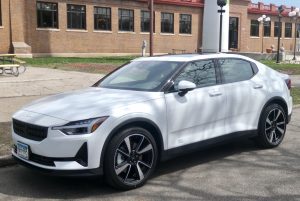
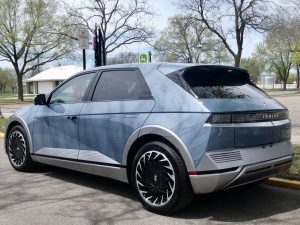
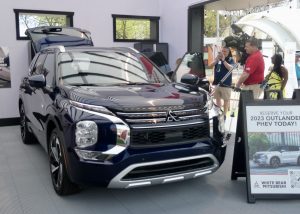
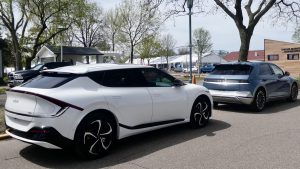
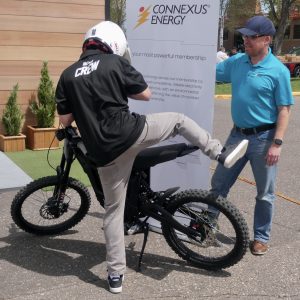
 John Gilbert is a lifetime Minnesotan and career journalist, specializing in cars and sports during and since spending 30 years at the Minneapolis Tribune, now the Star Tribune. More recently, he has continued translating the high-tech world of autos and sharing his passionate insights as a freelance writer/photographer/broadcaster. A member of the prestigious North American Car and Truck of the Year jury since 1993. John can be heard Monday-Friday from 9-11am on 610 KDAL(www.kdal610.com) on the "John Gilbert Show," and writes a column in the Duluth Reader.
John Gilbert is a lifetime Minnesotan and career journalist, specializing in cars and sports during and since spending 30 years at the Minneapolis Tribune, now the Star Tribune. More recently, he has continued translating the high-tech world of autos and sharing his passionate insights as a freelance writer/photographer/broadcaster. A member of the prestigious North American Car and Truck of the Year jury since 1993. John can be heard Monday-Friday from 9-11am on 610 KDAL(www.kdal610.com) on the "John Gilbert Show," and writes a column in the Duluth Reader.